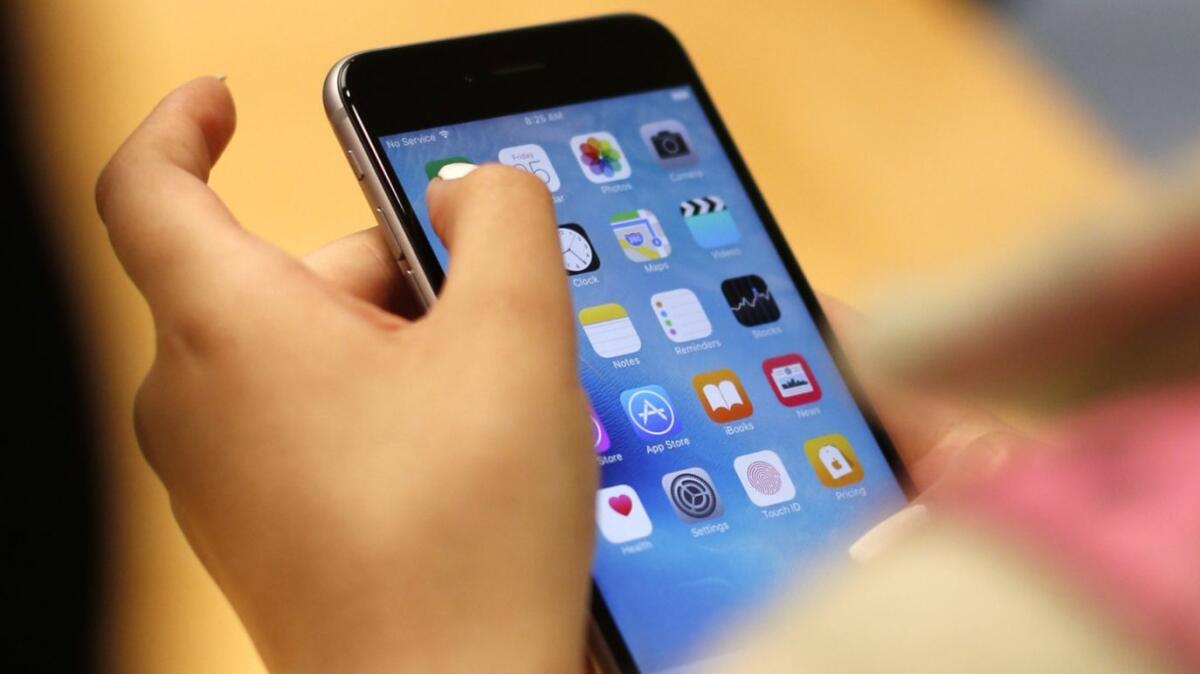Apple sales shrink as iPhone demand weakens, but there’s some good news

Apple Inc.’s sales are still shrinking amid weakening iPhone demand, despite the company’s increasing emphasis on services designed to bring in a steady flow of money from the 1.4 billion of its devices still in use.
Revenue for the January-through-March quarter fell to $58 billion, down 5% from the same quarter last year, the company said in its earnings report Tuesday. That downturn followed a 5% drop in the previous quarter.
It’s the first time in 2½ years that Apple has suffered two consecutive quarterly revenue declines.
Apple still posted a profit of $11.6 billion during the quarter, though that was down 16% from the same quarter last year. That translated into $2.46 per share — down 10% year over year but above the $2.36-per-share forecast among analysts surveyed by FactSet.
The Cupertino, Calif., company also announced a 5% increase in its quarterly dividend to 77 cents per share.
That news, plus a company forecast signaling that the revenue downturn may be ending in the current April-through-June quarter, seemed to please investors. Apple’s stock climbed about 5% in after-hours trading.
But even if the shares rise similarly during Wednesday’s regular trading session, the stock will remain about 10% below the peak it reached nearly seven months ago.
Questions still loom over the stock. Apple is grappling with challenges it hasn’t had to confront since iPhone debuted 12 years ago.
Until recently, Apple could count on people eagerly lining up to buy its latest iPhone models at ever loftier prices. That’s no longer the case, especially now that Apple is charging $1,000 and more for its top-of-the-line iPhones. Many consumers aren’t seeing enough compelling new features to persuade them to scrap their old devices and buy a new one.
That’s part of the reason iPhone sales in its latest quarter plunged 17% year over year to $31 billion. Much of the erosion is occurring in China, where Apple is facing stiffer competition from homegrown smartphone makers Huawei and Xiaomi.
Apple Chief Executive Tim Cook signaled that the worst may be over during a Tuesday conference call with analysts. “We like the direction we’re headed with iPhone, and our goal now is to pick up the pace,” Cook said.
Most analysts expect the iPhone malaise to persist at least through the fall, when Apple traditionally unveils its latest models. “Apple remains the iPhone company,” Chatham Road Partners analyst Colin Gillis reminded investors in a research note.
Around the same time, Apple also is expected to launch a new Netflix-style video streaming service.
Cook previewed the service during a celebrity-laden event last month without disclosing how much it would cost to subscribe. He touted it as an example of how Apple intends to continue to make money from the iPhones, iPads and Mac computers it has already sold.
Apple already has attracted more than 50 million subscribers to a music streaming service it started four years ago. It’s now aiming to sign up tens of millions more to the video service, as well as others for video games and news.
The company’s service revenue also includes sales of extended-warranty programs for its devices, hefty commissions from apps that sell subscriptions and other digital goods through its App Store and fees that Google pays to be the built-in search engine on iPhones and iPads.
All told, all those services generated $11.5 billion in revenue during the quarter, up 16% from the same quarter last year.






